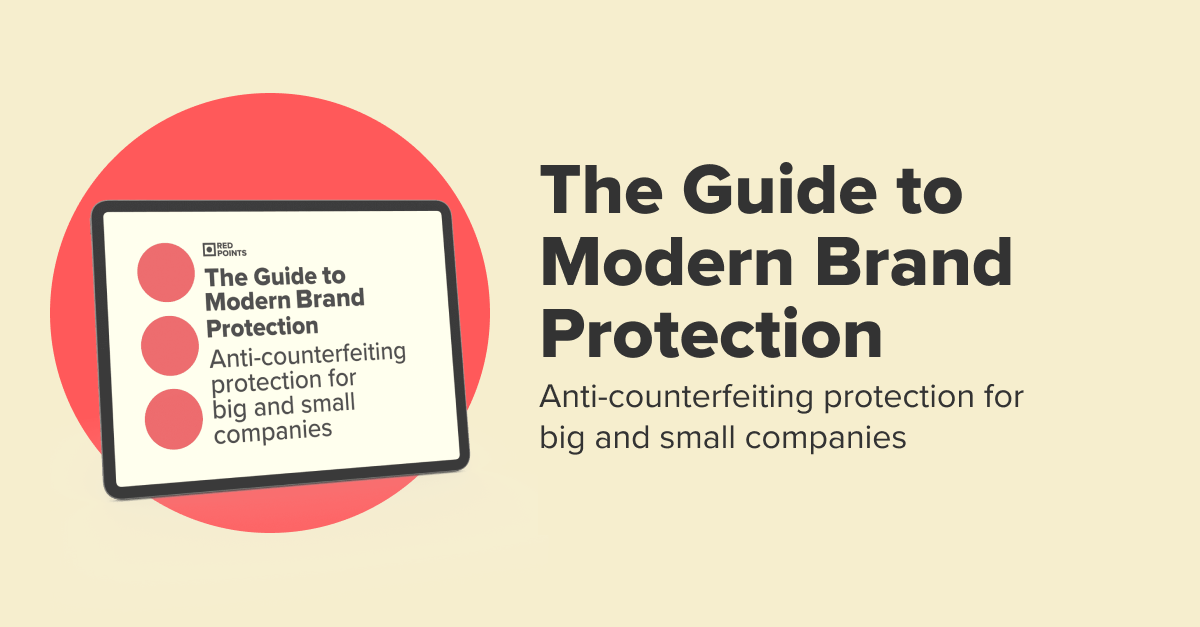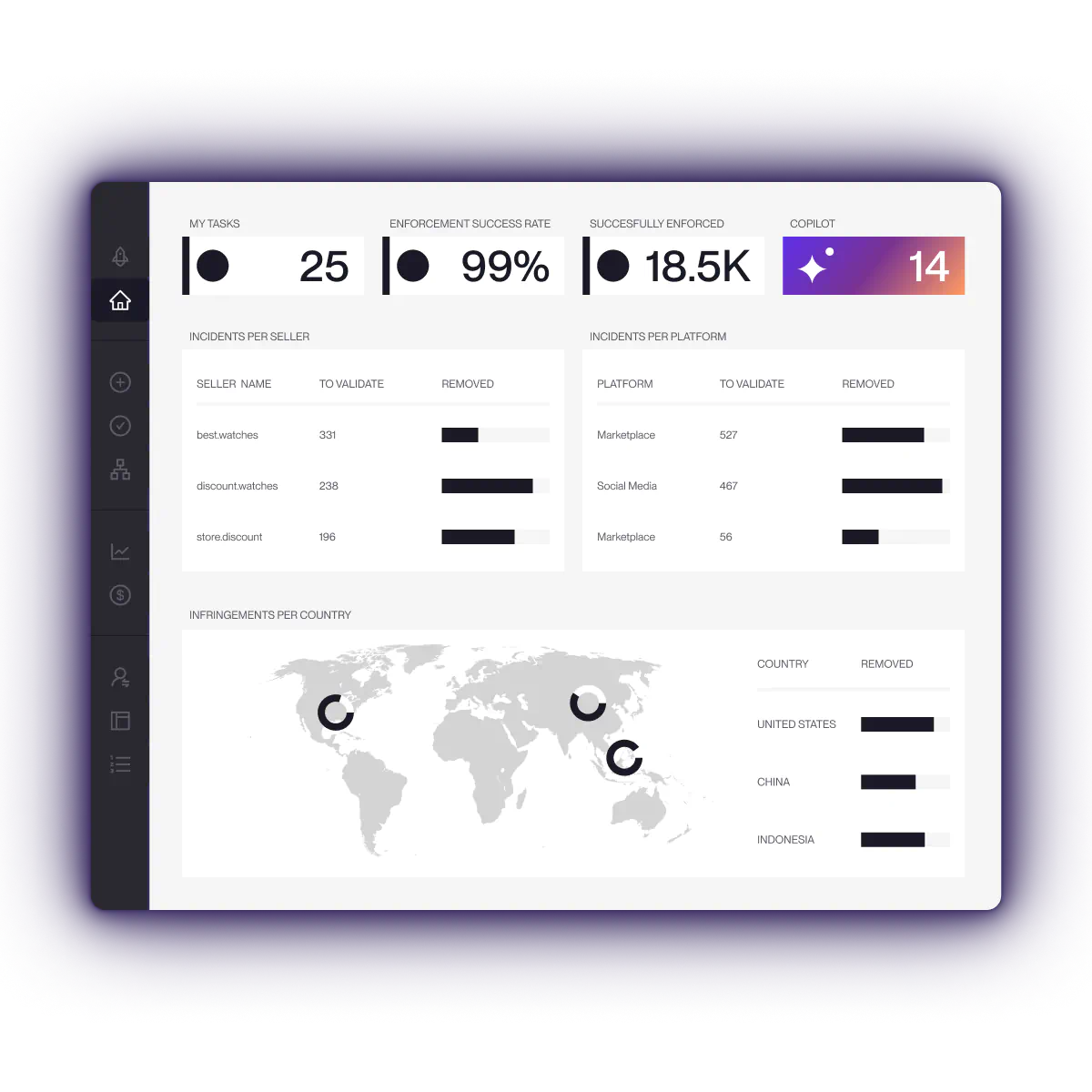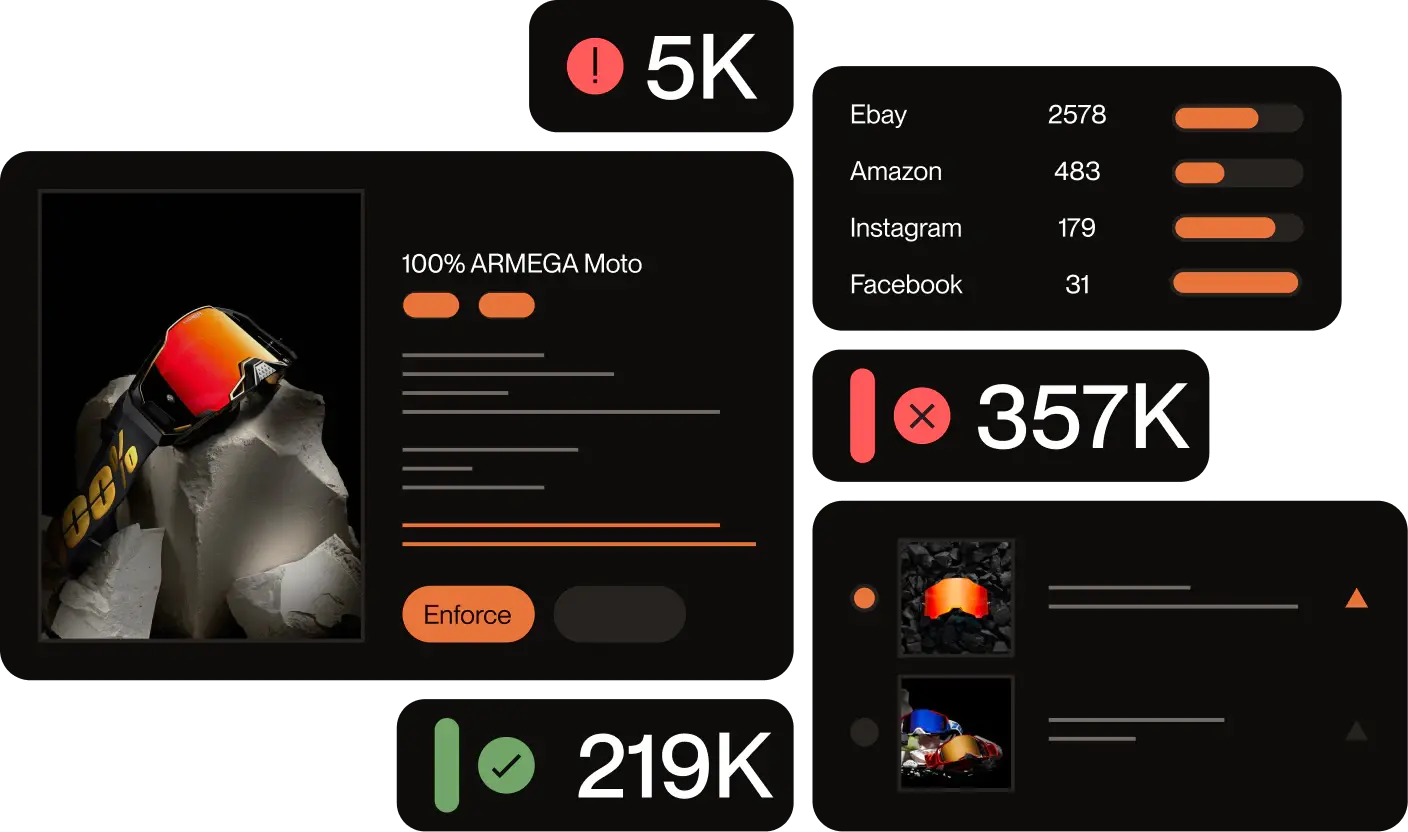Every brand reaches a moment when scattered fixes are no longer enough. Maybe you’ve spotted a few fakes on a marketplace. Maybe an impersonation account showed up on social media. Or maybe you’ve already hit the stage where counterfeiters appear faster than you can remove them.
No matter where you are on that journey, one thing is clear: online brand abuse does not stay small. It grows, it spreads across channels, and it becomes harder to control if you don’t have a plan.
This guide was built to give you that plan. Instead of a one-size-fits-all approach, it outlines thirteen practical strategies you can apply depending on your current level of exposure and internal resources. Whether you’re just getting started or already tackling high-volume threats, you’ll find clear next steps to strengthen your defenses, protect your customers, and keep your brand’s reputation intact.
If you want a roadmap you can actually use (one that helps you move from reacting to taking control), this is where to begin.
Stage 1: Build the foundations
At the early stage, most brands are not drowning in counterfeits yet. What they are seeing is the first few warning signs: an odd listing on a marketplace, a suspicious domain, a reseller they do not recognize, or a customer complaint that does not match any real order. This is the moment to act early. A strong foundation makes future protection easier, faster, and far less expensive.
Below are the essential steps every brand should put in place before the problem grows.
1. Register and secure your intellectual property
Brand protection starts with ownership. Before you can enforce your rights, you must clearly define them. Register your brand names, logos, and product designs in the countries where you sell, and in the regions where counterfeiting is most common. This ensures you can challenge infringers quickly and enroll in native platform programs like Amazon Brand Registry, eBay VeRO, Alibaba IPP, and others.
2. Lock down your digital footprint
Fraudsters often move faster than brands when it comes to digital assets. Secure key domain variations, common misspellings, and relevant top-level domains so they cannot be used for spoofing later. Share NDAs with partners and vendors before exchanging confidential information, and make sure contracts include basic IP protection requirements.
3. Know what can be infringed
Different types of intellectual property require different types of protection. Understand the basics of the main categories you rely on: trademarks, copyrights, design patents, utility patents, branded product images, and distinctive packaging. This clarity will help you recognize infringement quickly and gather the right evidence.
4. Build your evidence process early
Even at low volumes, every enforcement action depends on proof. Capture screenshots of listings, seller details, URLs, product photos, and any relevant metadata. Organize this consistently so you don’t lose momentum when you need to file a takedown.
5. Use manual enforcement to stay ahead
At this stage, manual reporting is often enough. Register your IP on marketplaces and social platforms, follow their takedown requirements, and track the cases you submit. While this requires some effort, it helps you block early infringers from gaining traction and gives you visibility into where future problems may appear.
Stage 2: Strengthen and scale your protection
Once your foundations are in place, the next step is to build a protection system that can handle growth. At this stage, most brands begin to see infringements across more than one channel. Counterfeit listings show up on multiple marketplaces. Fake social media profiles become more frequent. Domains, ads, and unauthorized sellers start to overlap. What used to be a few isolated issues can quickly turn into a pattern.
The goal of this stage is to give your team more control, more visibility, and more speed, without overwhelming them with manual work. These strategies help you move from reacting to problems to actively containing them.
4. Expand monitoring to every relevant channel
Infringers rarely stay in one place. As your brand gains visibility, abuse spreads across marketplaces, social platforms, search engines, domains, and even paid ads. Expanding your monitoring helps you catch threats earlier, understand where the volume is coming from, and avoid blind spots. Focus on the channels where your customers shop and where your category is most often targeted.
5. Use technology to detect what manual searches miss
Manual searching works when the volume is low, but counterfeiters scale fast. AI-powered image matching, keyword variations, clustering, and behavioral detection help you filter thousands of listings and surface the real threats. An AI-powered solution like Red Points can work as an extension of your team and give them breathing room. It removes the noise so they can focus on the decisions that matter.
6. Register in platform-native brand protection programs
Most major platforms offer built-in systems that speed up enforcement. Programs like Amazon Brand Registry, eBay VeRO, Alibaba IPP, Meta Rights Manager, TikTok Brand Protection, and Google Ads trademark tools give you faster processing times and more reliable removals. Registering your IP in these native portals strengthens your overall strategy and reduces the time your team spends on manual submissions.
7. Build alignment across internal teams
Brand protection touches more than one department. Sales worries about channel conflict. Marketing cares about reputation and performance. Legal manages IP and compliance. Digital teams handle marketplaces and social channels. As threats increase, it becomes essential that everyone knows what to flag, where to report issues, and how to escalate urgent cases. Building alignment makes your response faster, more consistent, and far more effective.
Stage 3: Advanced strategy: Stay ahead of the game
Once your brand is dealing with high volumes of counterfeits, repeat infringers, cross-channel impersonation, and coordinated networks of bad actors, you have moved past basic and intermediate protection. At this level, reacting is no longer enough. You need a strategy that helps you understand who is behind the abuse, how they operate, and what actions will create long-term impact. The focus shifts from “taking things down” to predicting, preventing, and dismantling fraudulent activity at scale.
9. Connect the dots across sellers and platforms
Advanced programs look beyond isolated listings. By clustering data points such as seller names, pricing behavior, product images, and domain patterns, you can uncover links between accounts that appear unrelated at first glance. This helps identify repeat offenders, high-volume counterfeit networks, and shared supply-chain sources. With these connections, your team can take more strategic action and avoid wasting time on low-impact cases.
Red Points’ Actors Networks help brands go beyond isolated takedowns to understand and uncover potential relationships between actors. It uses millions of data points to identify and cluster actors who sell the customers’ protected assets and have common data within their profiles.
10. Move into business-intelligence mode
At this stage, brand protection becomes a source of intelligence, not just enforcement. An advanced platform gives you visibility into who is selling what, from where, at what speed, and through which channels. This information can support pricing decisions, supply-chain visibility, marketing strategy, and even product development. Instead of just responding to threats, your teams can use the data to make smarter business decisions across the organization.
11. Integrate online and offline efforts
Sophisticated counterfeiters don’t operate exclusively online, and neither should your protection strategy. Combine digital takedowns with offline actions such as customs training, product authentication programs, and litigation. When online data reveals patterns you can trace to physical distribution, you can disrupt entire networks rather than isolated sellers. A strong program blends digital intelligence with real-world enforcement to generate long-lasting results.
12. Build automated escalation paths
When you identify repeat infringers or high-risk networks, escalation needs to be fast and consistent. Create clear rules for when an issue moves from automated takedown to manual review, and from there to legal action or platform-level intervention. Automated escalation helps ensure high-impact cases don’t get buried under volume and that the right stakeholders are involved at the right time.
13. Continuously refine your strategy as threats evolve
The most advanced brands never stop adjusting. As channels change, new marketplaces emerge, and AI-generated fakes become more convincing, your protection parameters must evolve. Review your detection settings, priority rules, and evidence requirements regularly. This ensures your program stays effective long term and continues to outperform counterfeiters who constantly shift tactics.
Cotopaxi, in partnership with Red Points, keeps monitoring and expanding its keyword strategy, maximizing the results and uncovering new patterns with automation.
What’s next
Whether you are just starting to see isolated infringements or dealing with coordinated abuse across channels, the reality is the same: threats will continue to grow in volume, sophistication, and speed. What separates resilient brands from overwhelmed ones is not luck but structure. Clear foundations, the right tools, and a scalable strategy turn brand protection from constant reaction into predictable control.
If you want greater visibility into where risks are coming from, faster ways to remove them, and a data-driven program that supports long-term growth, the next step is simple: see what a modern brand protection platform can do for you.
If you want a data-driven view of your brand’s current exposure and the actions that would create the biggest impact, request a demo and get a personalized analysis.










